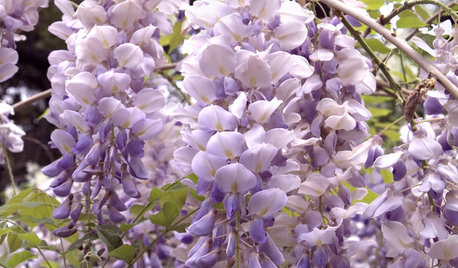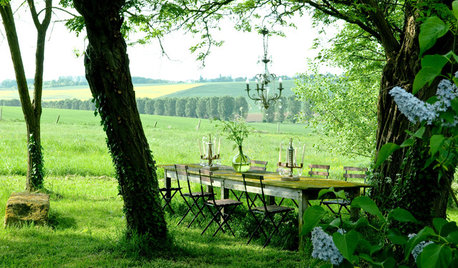Pruning wisteria tree
woodyoak zone 5 southern Ont., Canada
14 years ago
Related Stories

SPRING GARDENINGSpring Planting: Wonderful Wisteria
Classic Vines Add Fragrance, Color and Romance to Garden Designs
Full Story
WINTER GARDENINGPruning Secrets for Exquisite Roses
Encourage gorgeous blooms year after year with this time-tested advice on how to prune your rosebush in winter for health and shape
Full Story
GARDENING GUIDESHow to Prune Your Flowering Shrubs for the Best Blooms
Less is often more when it comes to properly pruning flowering shrubs. Here’s what to do and why
Full Story
GARDENING GUIDESGot Frost-Damaged Plants? How It Happens, and When and How to Prune
Crispy brown leaves are a sure sign that Jack Frost has been to your neighborhood
Full Story
HOUZZ TOURSHouzz Tour: Wisteria and Light in the French Countryside
A stone’s throw from the gardens of Versailles, a former presbytery is now a dream weekend retreat
Full Story
GARDENING GUIDESTree Care: Common Tree Diseases and What to Do About Them
Learn to recognize trees that may be affected by diseases or pests so you can quickly take action
Full Story
GARDENING GUIDESHow to Keep Your Trees Healthy
Ensure your trees’ vigor for years to come with these tips for protecting roots, watering effectively and more
Full Story
GARDENING GUIDESGreat Design Tree: Australian Tea Tree
A living sculpture with an unmistakable appearance, this coastal native creates an intriguing landscape scene
Full Story
GARDENING AND LANDSCAPINGCrazy for Fruit Trees
Whether a single citrus or a mini apple orchard, even the smallest landscape space can bear deliriously delicious fruit
Full Story
EDIBLE GARDENSHow to Grow 10 Favorite Fruit Trees at Home
Plant a mini orchard in fall, winter or early spring to enjoy fresh-off-the-tree fruit the following year
Full Story


Thyme2dig NH Zone 5
silvergirl426_gw
Related Discussions
Wisteria Pruning and Care
Q
Pruning Wisteria into a Small Tree?
Q
unsure of pruning wording for wisteria
Q
Any difference between pruning & cutting leaves with WISTERIA
Q
woodyoak zone 5 southern Ont., CanadaOriginal Author
cad_in_bedford
woodyoak zone 5 southern Ont., CanadaOriginal Author
woodyoak zone 5 southern Ont., CanadaOriginal Author
midnightsmum (Z4, ON)
woodyoak zone 5 southern Ont., CanadaOriginal Author
t_kleck_yahoo_com
woodyoak zone 5 southern Ont., CanadaOriginal Author
organic_kitten
woodyoak zone 5 southern Ont., CanadaOriginal Author
organic_kitten
woodyoak zone 5 southern Ont., CanadaOriginal Author
Annie
woodyoak zone 5 southern Ont., CanadaOriginal Author
libbyshome
Annie
krycek1984
woodyoak zone 5 southern Ont., CanadaOriginal Author
Beckett927_yahoo_com
woodyoak zone 5 southern Ont., CanadaOriginal Author
roseberri, z6
diaphanous
woodyoak zone 5 southern Ont., CanadaOriginal Author
diaphanous
cadillactaste
cadillactaste
cadillactaste